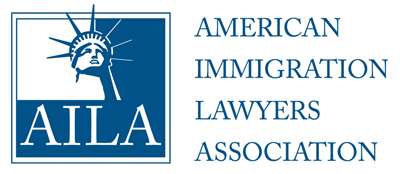Lost Green Card: Replace? Renew? What is the Right Form?

When someone loses a Green Card, the first instinct is to pay for a replacement. However, that can actually be the wrong option or a choice that does not meet your needs. The loss could occur when you lose your purse or wallet, but often times it can also be from never receiving the card in the mail. In a nutshell, a “Green Card lost situation” can be broken into different types:
- A Conditional Green Card, which expires within 2 years
- A 10-year Green Card, which DOES have more than 6 months remaining on it
- A 10-year Green Card, which DOES NOT have more than 6 months remaining on it
- A Green Card that does not have an expiration date
- I never received a Green Card from USCIS, but I do have a 1-year Temporary Green Card Proof in my Passport
- I never received a Green Card from USCIS after an Adjustment of Status Filing
As you can see, there are many types of Green Card “Lose,” and each scenario has a differing outcome. But, before we evaluate the ideal outcomes, let us see the three filing options:
- I-90 – Replace/Renew a Green Card
- I-751 – Remove Conditions on a Conditional Green Card
- N-400 – Green Card Holder has held the Green Card long enough to qualify for Naturalization as a US Citizen, and meets all other eligibility requirements.
Let us explain the possible ideal outcomes in the order stated above, from 1 to 6.
A Conditional Green Card, which expires within 2 years
A Conditional Green Card is a Green Card based on Marriage less than 2-years old at the time of the Immigrant Interview. Since Marriage is less than 2 years, the Green Card is only valid for 2 years. Believe it or not, Conditional Green Card Holders frequently believe the I-90 is the proper form and usually wastes $540 in filing the I-90 form. The truth is, everything depends on:
- First, whether the Green Card Holder is still married; and, if not married, whether the Green Card Holder qualifies for a Waiver of the I-751.
- Second, how close has the loss occurred to the green card’s expiration date.
(If still married, and would need the I-751 Joint Filing at the end of month 21 of the Green Card) If a Conditional Lawful Permanent Resident loses the card between Month 0 to 21, the I-90 may be filed, but may never produce a Green Card since the I-90 filing can take 1 to 2 years to process. If the Card expires within 90 days of the loss, the I-751 would actually provide an 18-month extension, and an INFOPASS would permit the Green Card Holder to acquire an I-551 Stamp in the Foreign Passport for free. This is a situation whether an I-751 might be better than an I-90, but it really does depend on when the loss occurs, the close to the expiration, the better the I-751 looks.
Note: The I-751 Joint Married Filing can only be filed 90 days before the expiration of the Green Card.
(If qualified for an I-751 Waiver Filing) If a Conditional Resident loses the green card at any time during the two year period, the I-751 waiver of the married joint I-751 Filing Requirement may be best. I-751 Waiver filings would have to occur eventually, and they permit the green card holder to directly apply for a “removal of conditions” to the 10-year green card. An I-90 in this situation would actually be bad and delay the immigrant from ever receiving a green card.
If you find yourself in this situation, please contact our law office to set up a consultation.
Please see our I-751 Blog Section, convenient link provided here: https://www.fickeymartinezlaw.com/category/immigration/i-751-removal-of-conditions/
A 10-year Green Card, which DOES have more than 6 months remaining on it
If a Green Card Holder has more than 6-months remaining on the Green Card that was lost, it would be more economical to file the N-400, versus the I-90, assuming all other eligibility requirements for the N-400 exist. Apart from the economical reason, the N-400 generally processes quicker than the I-90. If the filing is quicker and more economical, it can be better to do the N-400 versus the I-90. Contacting a local Immigration Attorney might be helpful.
A 10-year Green Card, which DOES NOT have more than 6 months remaining on it
Under USCIS National Policy, if a Green Card has less than 6 months remaining on it, the Green Card Holder should apply for the I-90. However, like in the above section, if the local USCIS Field Office permits the N-400 even if filed within 6 months of expiration or after the green card expired, the N-400 may be more beneficial than the I-90. Contacting a local Immigration Attorney might be helpful.
A Green Card that does not have an expiration date
This type of green card, the kind that is so old it does not have an expiration date (I-151 Version or I-551 Version), it may be possible to do the I-90 now 10 to 20 years overdue, or the local USCIS Field Office may permit the N-400 to be filed. Contacting a local Immigration Attorney might be helpful.
I never received a Green Card from USCIS, but I do have a 1-year Temporary Green Card Proof in my Passport
Sadly, this issue is very common. USCIS should first receive an E-request to establish the status of the Green Card delivery. If the Online Case Status for the Green Card states it was undeliverable or delivered (but the card never entered your mailbox), the Green Card Holder should contact USCIS IMMEDIATELY and file a complaint at USPS IMMEDIATELY.
If the E-request cannot quickly resolve the issue, an I-90 (free filing) may be required to notify USCIS of their error. Otherwise, the Immigrant may be without a Green Card or Temporary Green Card between month 13 and month 21, waiting to file for the I-751. Again, the I-90 can take 1 to 2 years to process, and it is usually denied since soon the I-751 would be required to be filed. Contacting a local Immigration Attorney might be helpful to figure out the best course of action.
I never received a Green Card from USCIS after an Adjustment of Status Filing
Again, this is a very sad experience, yet very common. Contact USCIS Immediately, and if the calls lead to nothing, try your best to schedule an INFOPASS Appointment with a USCIS Officer to inquiry what happened to the Green Card you thoroughly paid for. Speed in resolving this issue is generally the best action one can perform. The quicker you inquire and try to hunt down the missing green card, the high chance of success you would have. If Inquiry and INFOPASS do not work, filing an I-90 ASAP with the USPS Service Request stating the delivery error (if any) may be successful. The difference in this situation from the above situation is that Consular Processing provides a Visa and Temporary 1-year proof of Lawful Permanent Residence, whereas Adjustment of Status places NOTHING to prove status in your hands.
If you find yourself in this situation, please contact Fickey Martinez Law Firm to set up a consultation.
Should I file a Complaint at USPS if I never Received the Green Card, but it was marked as delivered by USPS?
Yes, if USPS says that the mail was delivered, USCIS will rely on that notice. Filing a complaint is your record of the USPS Error.
About Our Immigration Law Firm
We are a North Carolina Based Law Firm that focuses on Immigration Law. Although our offices are in Eastern North Carolina, many of our clients are found around the nation and around the world. Our Immigration Attorney uses online resources to better perform our service. We can meet you via Video Call, by Phone, or at one of our offices located in:
- Greenville, NC
- Fayetteville, NC
- Jacksonville, NC
- Morehead City, NC
Thank you for reading this blog post!!!
More Blog Posts:
Disclaimer: This Blog is made available by the lawyer or law firm publisher for educational purposes only as well as to give you general information and a general understanding of the law, not to provide specific legal advice. By using this blog site you understand that there is no attorney-client relationship between you and the Blog/Web Site publisher. The Blog should not be used as a substitute for competent legal advice from a licensed professional attorney in your state.
The post Lost Green Card: Replace? Renew? What is the Right Form? appeared first on Fickey Martinez Law Firm.












